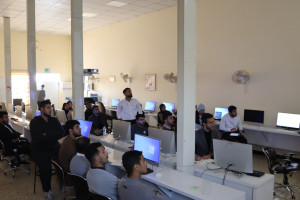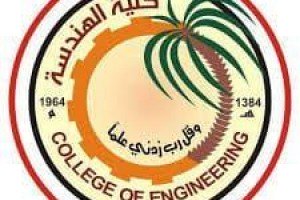The doctoral thesis of the student Samar Abdel Karim Karim from the University of Basra, College of Engineering, Department of Civil Engineering was discussed, entitled The effectiveness of the moving bed reactor (MBBR) in treating hospital wastewater in southern Iraq (Basra city). In this study, the effectiveness of mobile beds (MBBR) to remove some agents from wastewater in the Ports Hospital in southern Iraq, Basra Governorate, was examined. The application of biofilm technology has increased recently as a result of increasing demand from a growing global population for clean water supplies. To evaluate process performance, two independent numerical variables, hydraulic retention time (HRT) and dissolved oxygen (DO), and one categorical variable, packing media type, were selected. The effects of numerical variables were studied at three levels, 6, 12, and 24 hours for HRT and different times for DO, and the categorical variable Kaldnes-3 was examined. The thesis investigated the effects of filling rates (30%, 45%, and 60%) in three Reactors R1, R2, R3, on the performance of MBBR in removing COD, BOD and nitrogen compounds from hospital wastewater. This study demonstrated that moving bed reactors were an ideal and effective method for removing nutrients from hospital wastewater. The results showed that the filling ratio affects the parameter removal efficiency, and that the third aeration cycle is sufficient to completely remove ammonia and nitrate nitrogen. The study concluded that 6 hours of HRT and 45% filling ratio are ideal for good nitrification and good removal efficiency of COD and BOD in MBBR.This thesis also investigated the treatment efficiency of an experimental bioreactor using the Stover-Kincannon kinetic model.
The modified models showed strong correlation coefficients and good adaptability, and fit well with the datasets for all parameters, including inflow and effluent values, so the modified Stover-Kincannon models were suitable and the correlation coefficient for all parameters was as high as (R2=0.99). Which represents the highest correlation between the inflowing water values and the outgoing values







